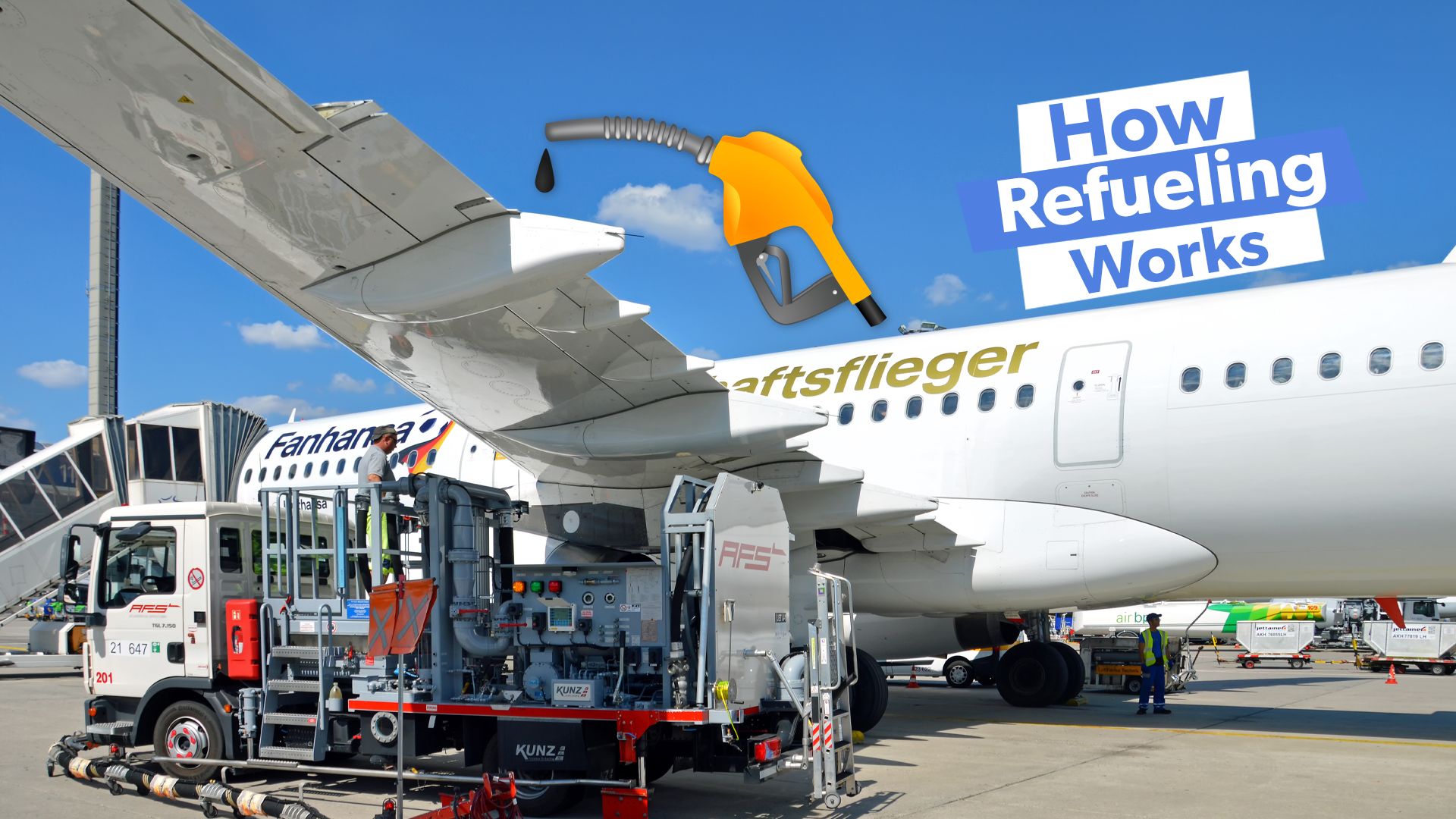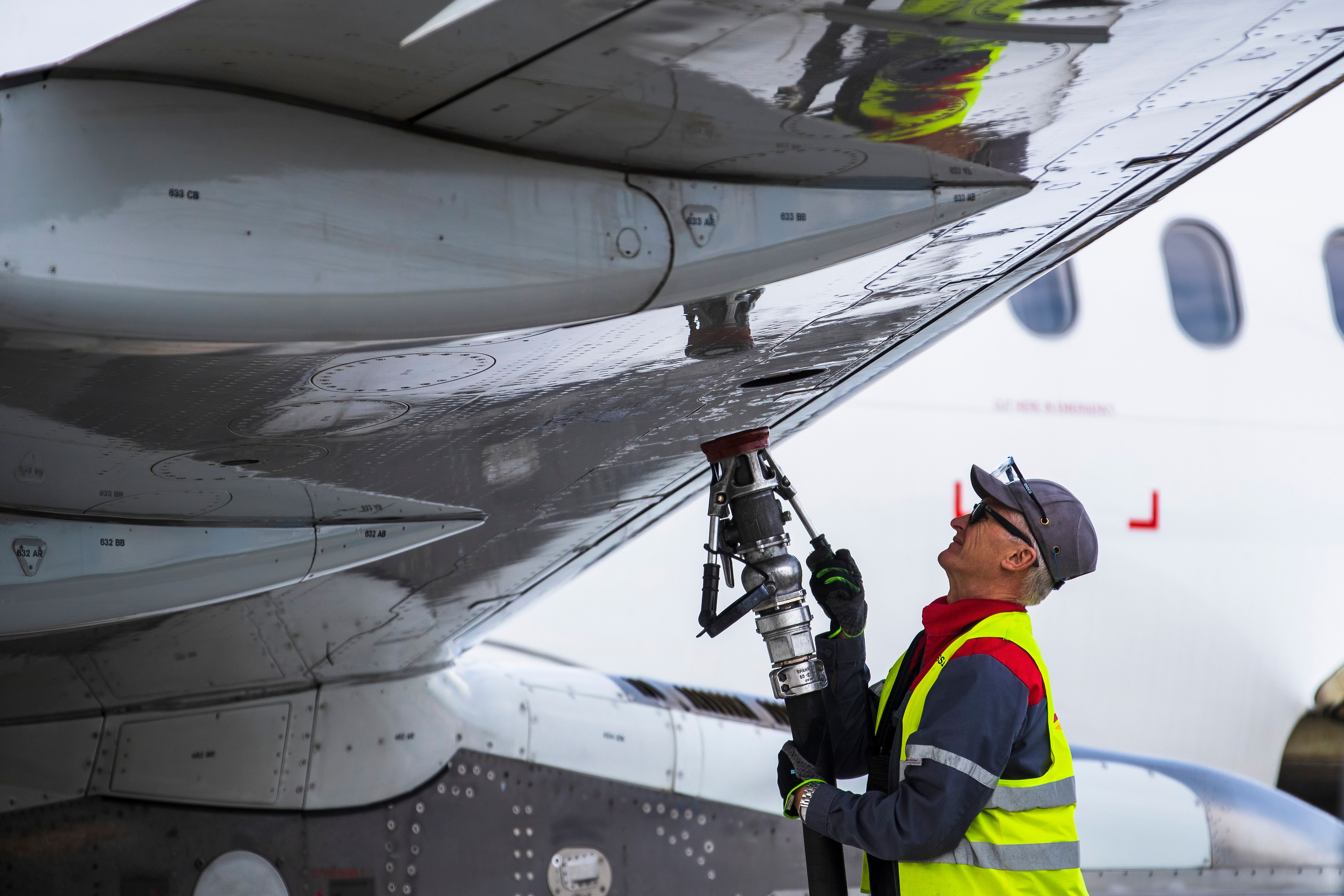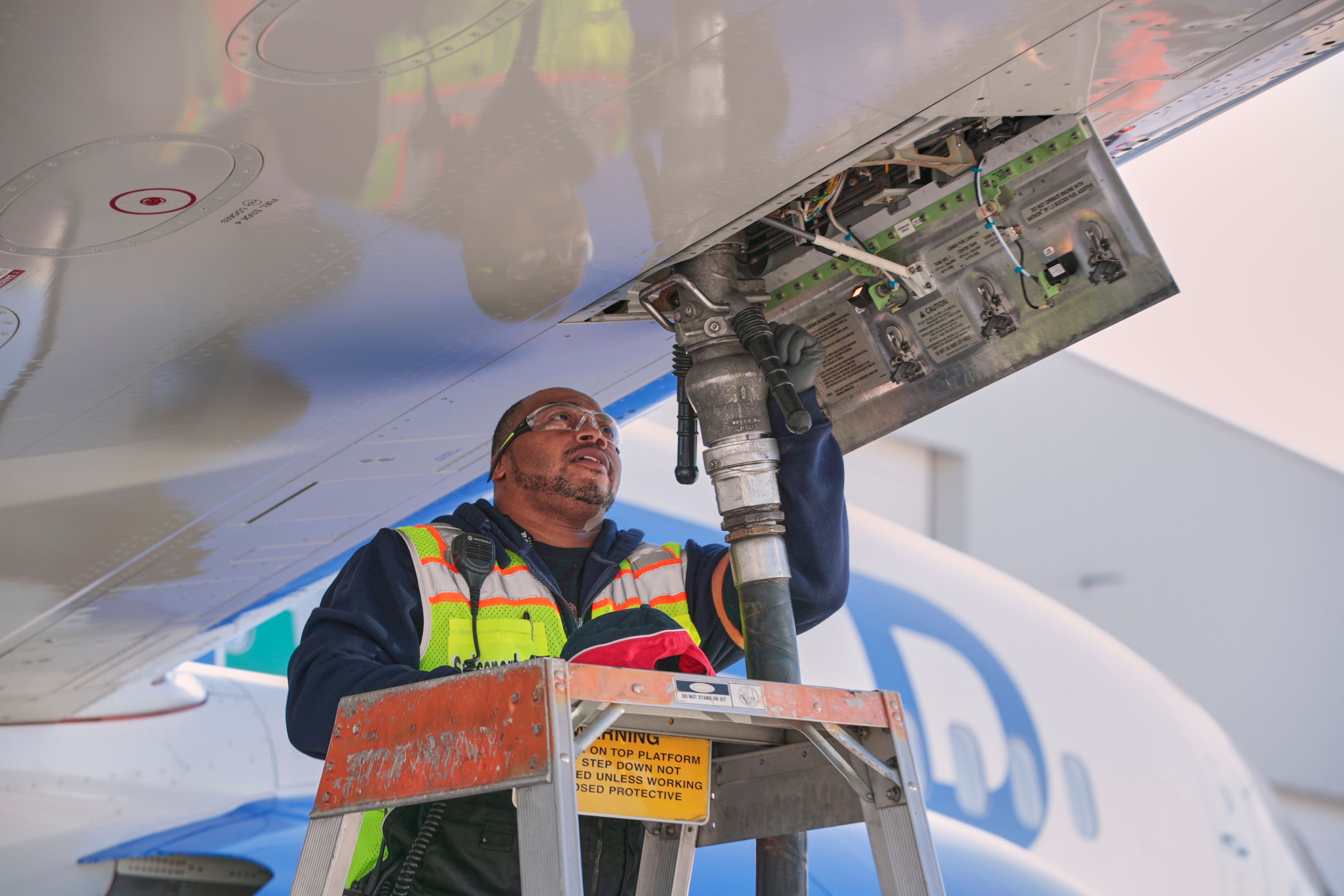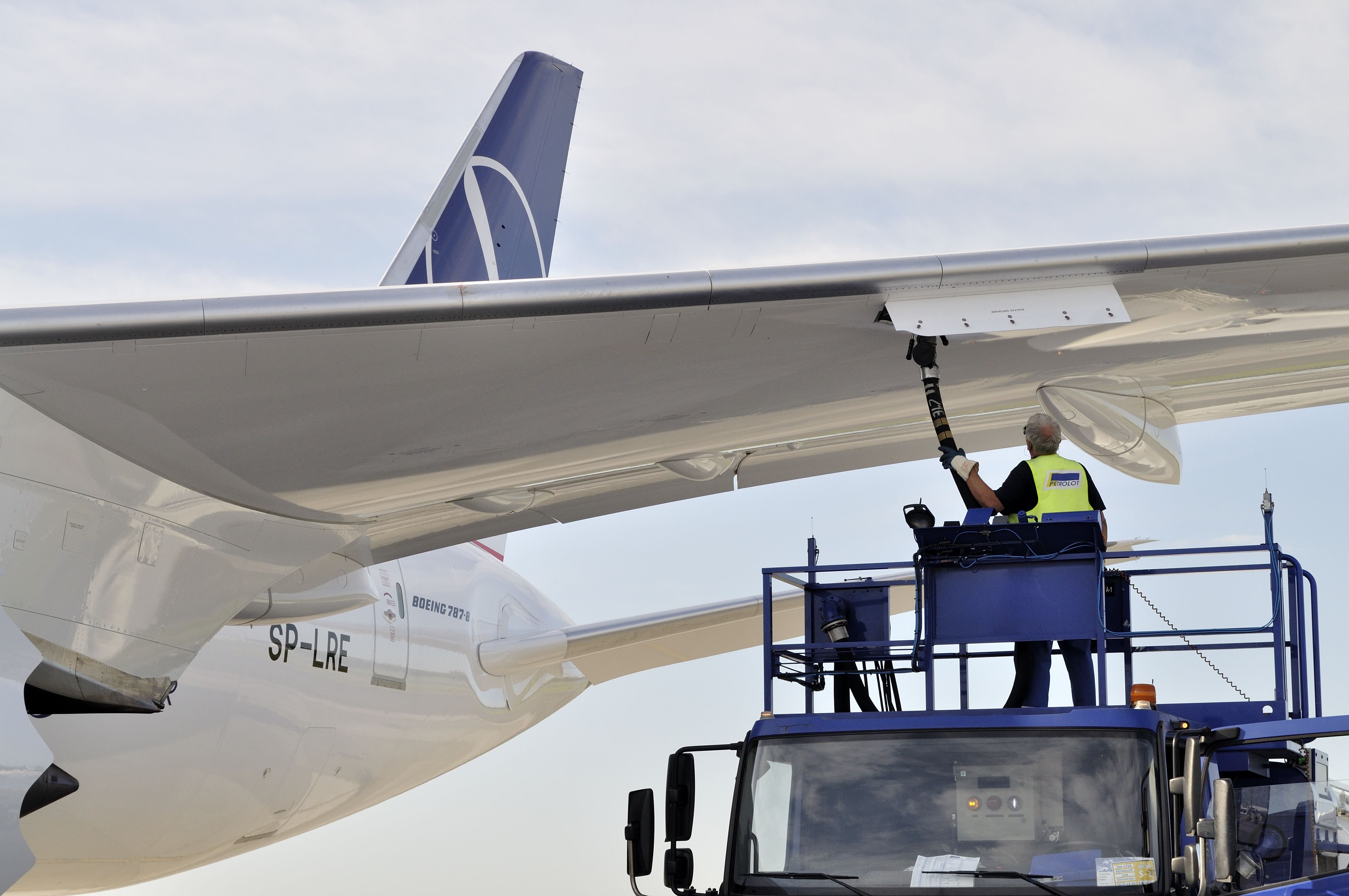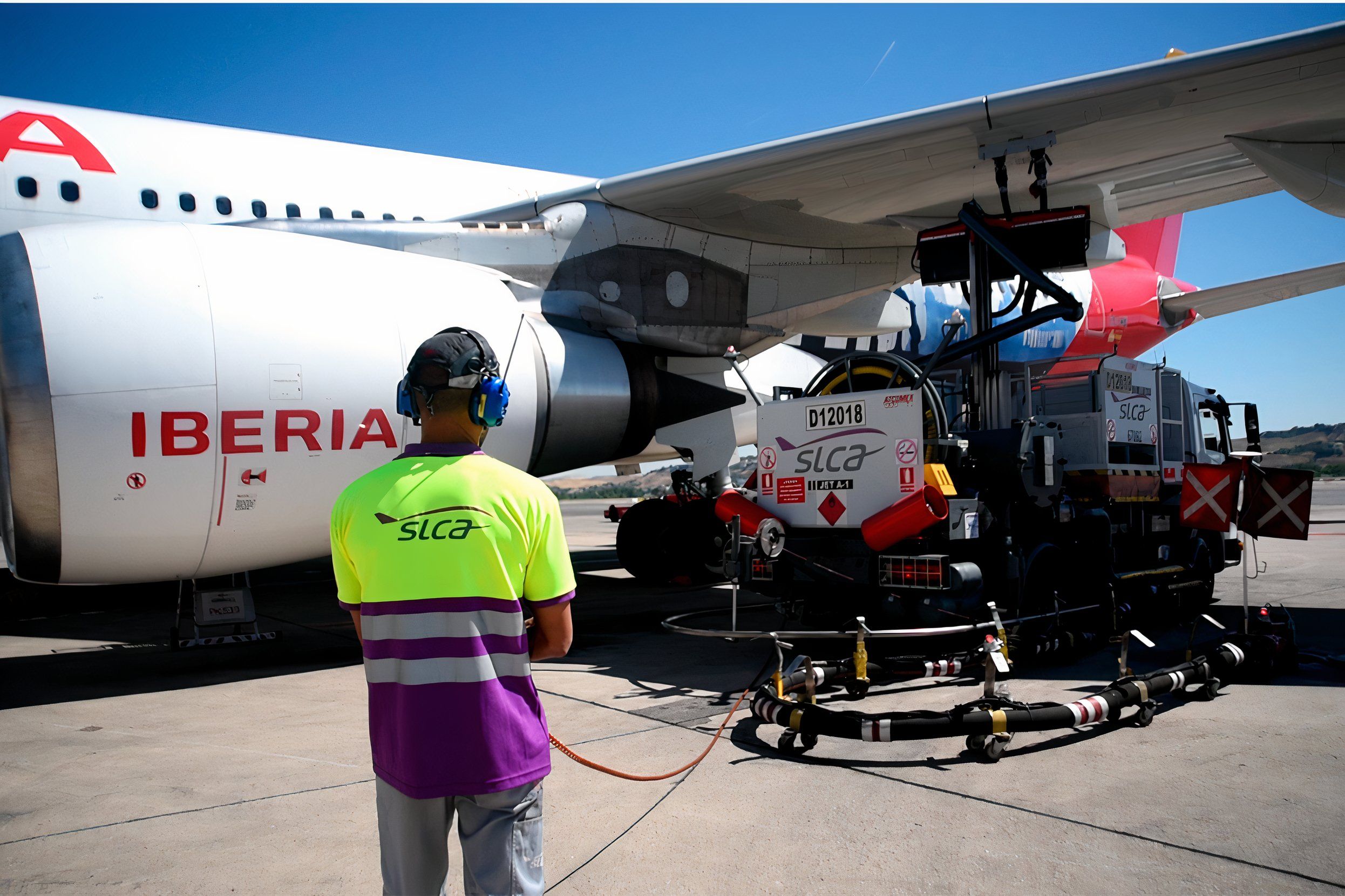Summary
- Fueling airliners is a standardized and crucial process for on-time performance, usually handled by independent fuel contractors.
- Airlines at regional airports often rely on fixed-base operators (FBOs) and fuel trucks for supply rather than underground pipes.
- Safety is paramount, with precautions such as grounding the airplane, using a deadman switch, and operating specific fuel intake systems.
Fueling is a routine part of nearly every flight and plays a vital role in keeping things running smoothly. Though it may seem like a simple task, it’s an essential process that directly impacts an airline’s ability to stay on schedule. From ensuring the right amount of fuel is loaded to making sure everything is done efficiently, fueling is key to getting flights off the ground on time.
Communicating fuel loads
The fueling process kicks off with the airline coordinating with a fuel contractor to determine how much fuel is needed for the flight. Rather than handling fueling in-house, most airlines rely on independent operators based at the airport to take care of this. These contractors not only handle fueling but often provide other services like lavatory maintenance and general upkeep as well. It’s a behind-the-scenes partnership that keeps things running smoothly before takeoff.
Photo: Karolis Kavolelis I Shutterstock
Fuelers usually receive the fuel load information about 45 to 60 minutes before a domestic flight departs. In certain cases, the pilots themselves may directly inform the fueling agency about how much kerosene is needed. This is more common in general aviation or with corporate pilots, who are used to handling these details.
Airline pilots, on the other hand, typically don’t need to engage with the fuelers beyond a friendly greeting during their walk-around inspection. It’s one less thing on their plate, thanks to the established processes in place.
While we’re on the topic of refueling, here’s a list of aircraft with the largest fuel capacities:
- Airbus A380-800: 85,472 gallons (323,546 liters)
- Boeing 747-8: 63,034 gallons (238,610 liters)
- Boeing 777-300ER: 47,890 gallons (181,283 liters)
- Airbus A350-1000: 41,320 gallons (156,000 liters)
- Boeing 787-9: 33,528 gallons (126,917 liters)
FBO services
Airlines operating at regional airports often rely on contracts with fixed-base operators (FBOs) to handle their fueling needs for the few daily departures. In these cases, fuel is delivered via trucks instead of using underground pipelines, which are more common at larger airports.
Many smaller regional airports weren’t originally designed for commercial airline operations, and their current traffic levels don’t justify the installation of expensive underground fueling systems. The flexibility of FBOs allows these airports to keep things running smoothly, despite their more modest infrastructure.
Photo: United Airlines
The trucks used to refuel aircraft at these regional hubs can carry between 3,000 and 5,000 gallons of fuel, and they’re just as efficient as the underground systems found at bigger airports. While it might seem like a more manual process, these trucks can get the job done quickly, ensuring that planes are fueled up and ready to depart on schedule. The adaptability of these smaller airports and their use of fuel trucks demonstrates that even without large-scale systems in place, efficiency and speed are still prioritized.
Safety first
Safety is a top priority for fueling agents. Before they even begin fueling, they take important precautions, such as placing wheel chocks under the fuel truck (if one is being used) and grounding the airplane to prevent static electricity from sparking a fire. Every aircraft, whether it’s a small Cessna or a large Boeing, has a specific spot where the ground wire is attached to safely disperse static.
Photo: Stanislaw Tokarski I Shutterstock
While fueling, the agent also holds onto a deadman switch, which is a key safety measure. If they release the switch for any reason, the fueling process stops immediately. These precautions ensure that fueling is done as safely as possible, no matter the size or type of aircraft.
Once the safety precautions are in place, the fueler can access the refueling panel. Depending on the aircraft, refueling might happen from the right wing, left wing, or even from either side. Every plane is a bit different, but most have a relatively simple intake system where the fueler can input the required amount of fuel. When the right amount is reached, a shutoff valve automatically closes to stop the flow.
Some planes are advanced enough to handle fuel distribution between their tanks automatically. However, for planes with multiple auxiliary or trim tanks, the pilots may need to open crossfeed valves to ensure the fuel is spread evenly across the aircraft. It’s a well-coordinated process designed to get the plane ready for takeoff as efficiently as possible.
An essential part of airline operations
Aircraft refueling is not only a critical part of airline operations, but it also required intricate attention to detail. Fueling becomes a bit more challenging when the aircraft’s fuel intake system is out of order. Though rare, planes can still be dispatched with an inoperative intake, as long as the fueling is done using an over-the-wing method. In these cases, fuelers switch to a more hands-on approach called “gravity fueling,” where fuel is added directly into the tanks. Afterward, maintenance crews use magnetic level indicators located at the bottom of the wing to ensure the correct fuel quantity is on board.
Photo: Iberia
All in all, fueling is often an overlooked part of the operation. Fuel agents are usually ready and waiting as planes arrive, carrying out their tasks efficiently amidst the constant activity on the ramp. Although their work may go unnoticed, it’s vital in keeping flights on schedule and safe. The role of fuelers might not always get the spotlight, but the importance of what they do is undeniable. Without them, none of the planes would be going anywhere.

